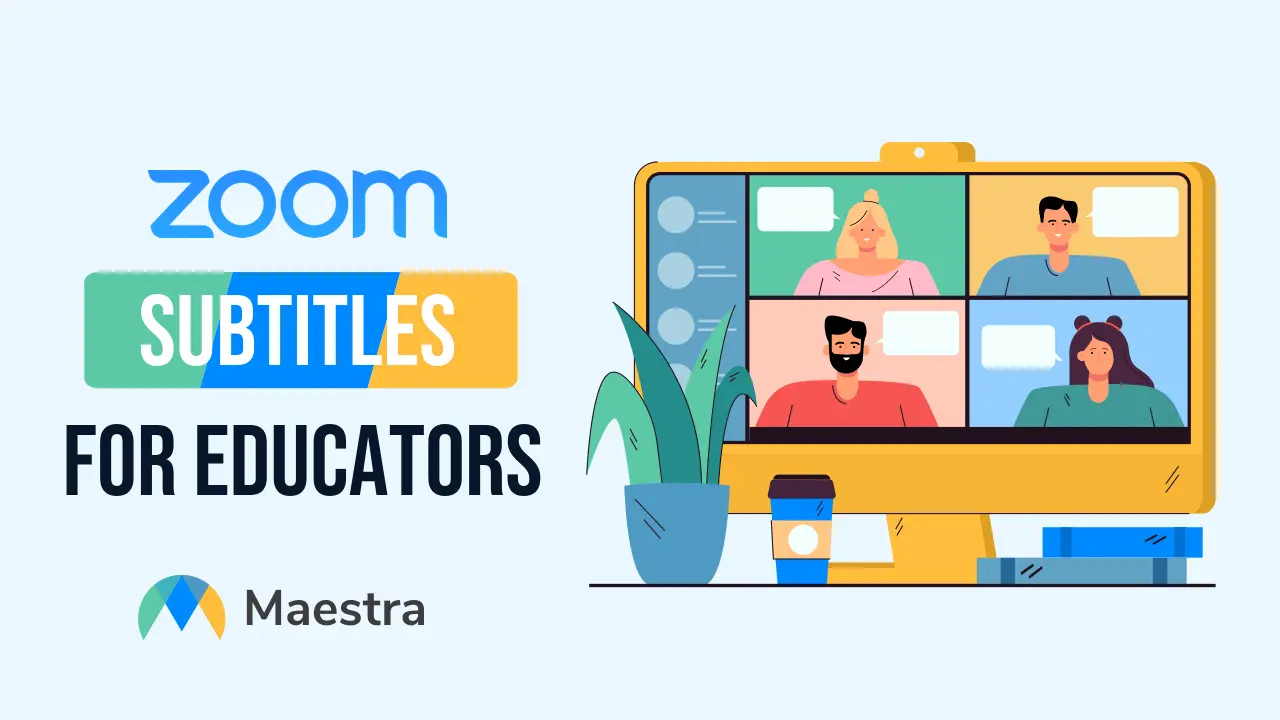A History of Subtitles

Subtitles are a common feature in all forms of video viewing today. With their ease of use and ubiquity across all major streaming services and public television channels, we tend to take them for granted, but once upon a time they were a new and revolutionary bit of technology. Let’s take a brief look at the history of subtitles and how they became such an important and integral part of viewing today.

Subtitles and Captions
Today, people tend to use the terms subtitles and captions interchangeably. When people do cite a distinction between the two, they’ll usually claim subtitles are for videos in other languages and captions are paired with content in the same language. Here, we take subtitles to mean any sort of textual accompaniment to a movie or video which mirrors the dialogue going on in the picture.
A Brief History of Subtitles
As many may know, movies were originally produced without sound. The infrastructure and technology required to create moving pictures emerged before that for sound recording, and so the earliest major thrust in cinema has often been called the golden age of silent movies.
Even before sound recording came about, movie producers were looking for a way to include some sort of textual context for the images playing on screen. As early as 1903, the picture Uncle Tom’s Cabin showcased a solution to this problem. Interspersed with the visual action, still frames were shown of character dialogue to make the story more comprehensible and adhere better to the book upon which the film was based. These placards were called intertitles and we can consider them the first form of subtitling.

With the advent of “talkies” or movies with sound in the 1920s, the need for these “intertitles” dropped off for a time. However, as cinema became more popular and movie industries in major cities across the globe grew, the need for subtitles returned.
By the time people started wanting to watch foreign films, subtitle technology had evolved to visually approximate what we have today. Soon, the famous Japanese films of Kurosawa, Italian neorealism and French New Wave began to be consumed overseas and shown with classic bottom-of-the-screen subtitles.
By the 1960s, as television began to outstrip movies as the major mode of viewing, technicians and scientists began to experiment with adding subtitles to TV channels. The major purpose of this was to provide access to the deaf and hard of hearing, and in 1973, the first public broadcasts with subtitles were shown.

These first television subtitles were encoded into the TV signal, however, and could not be turned off. It wouldn’t be until the 1980s that the technology existed to toggle subtitles on and off on televisions. As well, it wasn’t until the release of DVD in the late 1990s that it was possible to experience switchable subtitles on home media and purchased movies, and with that final development, subtitles reached the stage of development they’re at today.
The Importance of Subtitles
Subtitles have been around for over a century now, and their continuing popularity comes with good reason.
Subtitles allow better accessibility for the deaf and hearing impaired, and for foreign language viewers across the globe. This can have a huge impact on the revenue generated by movie studios and allows us all to enjoy popular entertainment equally.
Today, people watch movies and videos all the time on TV and the web, and subtitles can help draw in more viewers and followers for content creators and make their videos more easily watchable. Subtitles help search engines better index and categorize videos, making them more likely to be seen and watched by internet users. This boosts popularity, which in turn can be leveraged to monetize this content. As well, subtitles allow viewers to watch videos in locations they wouldn’t usually be able to—places like trains, classrooms, libraries, rideshares, and more.

Overall, subtitles allow us all to engage better with the content we love and this rewards those who create it. Another factor in this widespread usage and popularity is how easy it now is to add subtitles to videos with subtitle generator programs like Maestra.
Subtitles With Maestra
Maestra is the all-in-one software suite for content creators of all kinds. To add text to your video with Maestra’s fast and effective subtitling tool, visit our website and click on the captioning/subtitle tool. There, you’ll be prompted to upload your video in whatever file format is most convenient for you. Maestra’s cutting-edge speech recognition tool will then analyze the audio from your video and generate a full set of subtitles in minutes or less. You can choose from over fifty different languages to auto subtitle your video in and then export it either as a new combined video-text file or separately as the original video and a separate subtitle file.
________________________
In addition to subtitles, Maestra also covers transcription, translation, voiceover, and more. To experience the full capabilities of our suite, visit our website and sign up for a free trial with full access to all our tools and applications.



